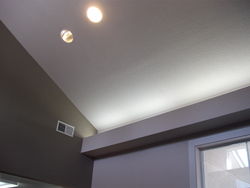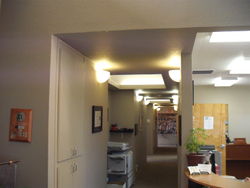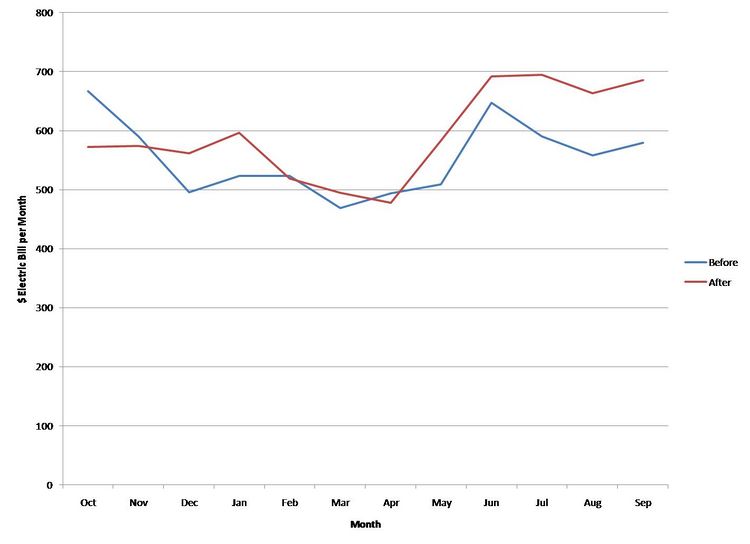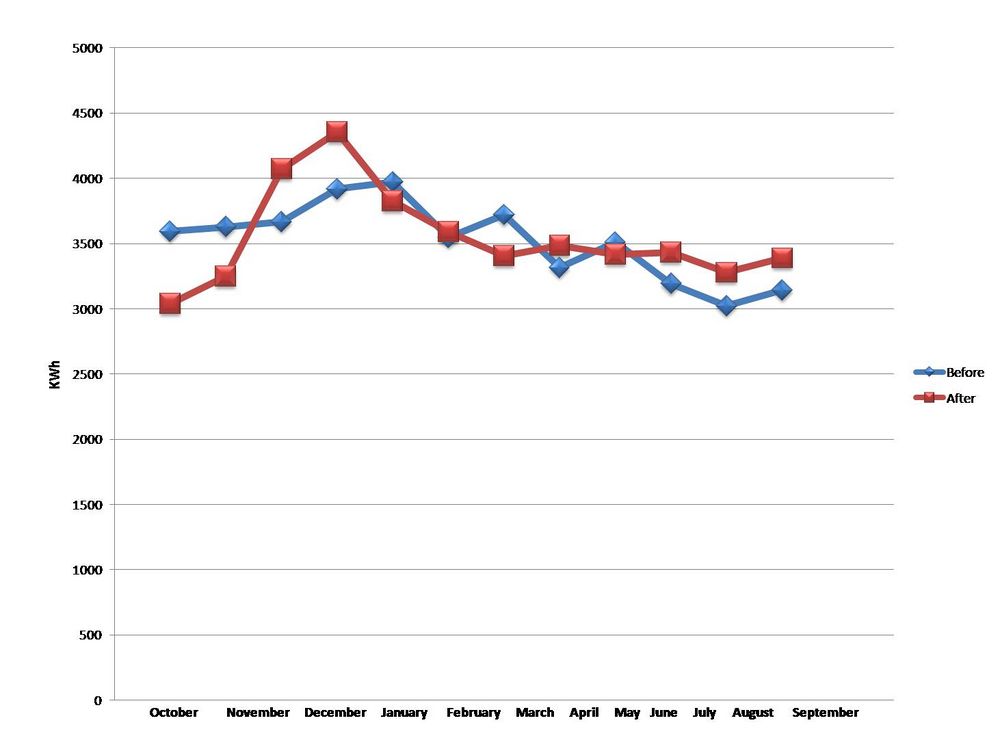Hospice of Humboldt

PURPOSE
The purpose of this page is to inform the reader on retrofits done by RCEA (Redwood Coast Energy Authority) at the Hospice of Humboldt. Additional information will include the effect of the retrofits on the energy bill and how much energy was actually saved compared to RECA's past estimates.[1]
Hospice of Humboldt
The Hospice of Humboldt is a place for people in their final stages of life, looking for a comfortable home in their ending years. The hospice provides health care as well as a comfortable environment close to home for people to find "dignity and purpose" in the time they have left, with a peaceful closure. The Hospice is located on Myrtle Street in Eureka. The picture on the left is outside of the hospice. [2]
History
Founded in 1978, the Hospice of humbold was brought about by a group of volenteers. Dr. Jack Irvine, Jill Irvine, Dr. Larry Hill, Jay Rezzonico and other members of the comunity started this business, and had their first patient in January, 1979. The hospice is a non-profit organization that is not affiliated with any outside hospital, business, or practice.
Services
The Hospice offers a wide variety of medial services provided by their volenteer based interdisciplinary team. This team is who decides how to design the world around the patients and meets the everyday basic needs of them. The team includes Dr. Ellen Mahoney, the hospice physician who overlooks all the medical services, registered nurses available 24 hours aday, Medical Social Workers, Certified Home Health Aides, and Chaplins for a non-denominational spirtual support. The Hospice does not keep patients alive on an artificial basis nor take their lives earlier than nature would have.
Types of Retrofits and the Effects on the Hospice of Humboldt
Lighting retrofits were completed by RCEA, for the Hospice of Humboldt, on October 6, 2008. Beverly Bishop describes the Hospice, lighting retrofits that were done and her overall experience working with RCEA.
Types of Retrofits

- 12 wall scones (Photo one)
- 15 desk lamp bulbs
- All florescent lights
- Over view lighting (Photo two)
The Interview
Bishop stated that the change in the amount of use of lighting before and after the retrofit was not noticeably different. She continued to say that her workforce is conscientious about the energy they are using. She told us that every time a room is not in use that the lights are turned off. They like keeping the hallways dimly lit because the light is needed more so in other places of the building.

Bishop said that the reasoning behind getting the retrofits was both because they wanted to save money and "lower our impact on the environment." She knew the impact of the lights and how it would help her business financially in the coming years. However, she also said that the reason why her business didn't get more retrofits was because they have plans to move their operation elsewhere in the near future. Bishop also commented on the different feel from the lights, specifically that they were brighter however easier on the eyes. When asked if RCEA was helpful during the retrofitting process, Bishop said that without the help of RCEA "the current light bulbs would have been used until their death and she would have bought new lights as needed." Bishop also said they were excellent to work with and she would recommend their service to anyone. [3]
Retrofit Results
The results of the retrofits showed that an increase in energy use, the average monthly bill, with a decrease in the amount of yearly pounds of CO2.

Graph 1 refers to the change in monthly cost in electricity in years before and after the retrofitting. The average cost per month actually increased after the retrofitting from what the cost was in the previous year.
| Table 1 | ||
|---|---|---|
| Before | After | |
| Avg. Cost | $543.43 | $587.29 |
| Avg. KWH | 3511.640 | 3590.550 |
Table one first shows the average electrical bill eleven month before the lighting retrofits took place and eleven months after the lighting retrofits. It then Shows the average Kilowatt Hours used for the same time period. This data is from November 2007 to September 2008 and from November 2008 to September 2009.
| Table 2 | ||
|---|---|---|
| February 2007-August 2007 | February 2009-August 2009 | |
| Avg. CO2 Offset | 1879.290 lbs. | 1828.980 lbs. |
Table two is showing two different CO2 offsets from the months of February to August a year before the lighting retrofits and a year after. The months chosen help give a more accurate average of CO2 offset because these months move through Winter, Spring and Summer. The CO2 ratio, which is 0.519 lbs of CO2 per KWh, was given RCEA.
Graph two is Comparing the monthly Kilowatt Hours used during two different year. The blue line represents the Kilowatt Hours being used before the lighting retrofits and the red line represents the use after the retrofits. In both there is a rise in usage as winter approaches, as you would expect. Then as summer approaches the amount of usage drops back off.

External links
http://www.hospiceofhumboldt.org/
http://www.finalchoices.calhealth.org/
http://hospicefoundation.info/index.htm
http://www.nhpco.org/templates/1/homepage.cfm